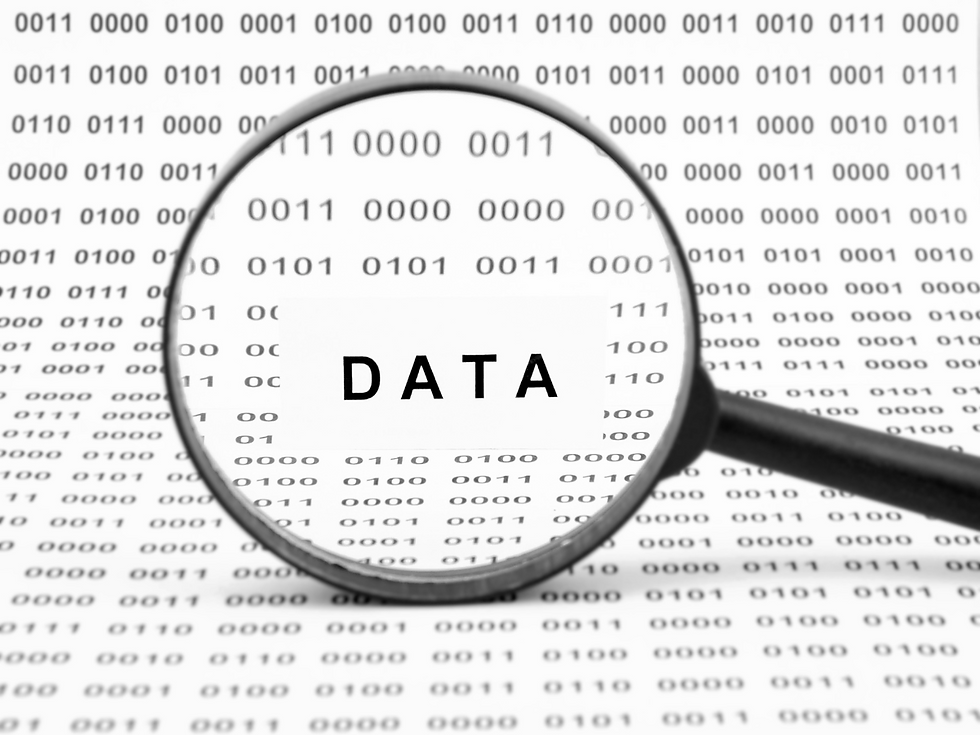Safeguarding Data in the Age of Big Data: Navigating Cybersecurity Challenges
- Cybrvault

- Apr 18, 2024
- 3 min read

In today's digital landscape, the convergence of big data and cybersecurity presents both unprecedented opportunities and daunting challenges. The proliferation of data analytics has revolutionized industries, enabling organizations to glean valuable insights and make data-driven decisions. However, this influx of data also amplifies cybersecurity risks, as cyber threats become more sophisticated and prevalent.
In this article, we delve into the intersection of cybersecurity and big data, exploring strategies for effectively managing security in the age of data analytics.
Understanding the Landscape:
Big data encompasses vast volumes of structured and unstructured data generated from various sources, including social media, IoT devices, sensors, and transactional systems. Organizations harness this data to extract insights, optimize processes, and drive innovation. However, the sheer volume, velocity, and variety of big data present formidable challenges for cybersecurity.
Cyber threats continue to evolve in complexity, ranging from malware and ransomware attacks to insider threats and sophisticated hacking techniques. Moreover, the interconnected nature of digital ecosystems increases the attack surface, exposing vulnerabilities across networks, devices, and applications. As organizations embrace data analytics to gain a competitive edge, safeguarding sensitive information and preserving data integrity become paramount concerns.
Key Challenges:
Data Protection: With the proliferation of data breaches and privacy regulations, protecting sensitive information has become a top priority for organizations. Data encryption, access controls, and robust authentication mechanisms are essential for safeguarding data at rest and in transit.
Insider Threats: Employees, contractors, and third-party vendors pose significant insider threats, whether through negligence, malicious intent, or inadvertent data leaks. Implementing user behavior analytics and privilege management solutions can help detect and mitigate insider threats proactively.
Scalability and Performance: Traditional cybersecurity solutions may struggle to scale effectively in the face of big data environments. Real-time monitoring, threat intelligence, and adaptive security measures are necessary to maintain performance and responsiveness in dynamic data ecosystems.
Regulatory Compliance: Compliance with data protection regulations such as GDPR, CCPA, and HIPAA requires stringent security measures and privacy controls. Organizations must ensure compliance across their data lifecycle, from collection and storage to processing and disposal.
Strategies for Managing Security:
Adopt a Holistic Approach: Integrate cybersecurity into every stage of the data lifecycle, from data acquisition and ingestion to analysis and visualization. Implement a layered defense strategy that combines perimeter security, endpoint protection, and data-centric security controls.
Leverage Advanced Analytics: Harness the power of big data analytics to detect anomalies, identify patterns, and predict potential security threats. Machine learning algorithms can analyze vast datasets in real-time, enabling proactive threat detection and response.
Implement Data Masking and Anonymization: Redact or anonymize sensitive data to mitigate the risk of unauthorized access or exposure. Data masking techniques such as tokenization and pseudonymization preserve data utility while protecting individual privacy.
Enhance Incident Response Capabilities: Develop and regularly test incident response plans to mitigate the impact of cyber incidents. Establish clear communication channels, define escalation procedures, and collaborate with internal and external stakeholders to streamline response efforts.
Embrace Cloud Security: As organizations migrate to cloud-based big data platforms, ensuring cloud security becomes imperative. Implement robust access controls, encryption, and monitoring solutions to safeguard data stored and processed in the cloud.
Foster a Culture of Security Awareness: Educate employees about cybersecurity best practices, emphasizing the importance of data stewardship and compliance. Conduct regular training sessions, phishing simulations, and awareness campaigns to instill a security-first mindset across the organization.
In the era of big data, cybersecurity is not merely a technological challenge but a strategic imperative. By aligning data analytics initiatives with robust security measures, organizations can unlock the full potential of big data while mitigating cybersecurity risks. By embracing advanced technologies, implementing proactive security strategies, and fostering a culture of vigilance, organizations can navigate the complexities of cybersecurity in the age of data analytics. Together, we can harness the power of big data responsibly and securely, driving innovation while safeguarding sensitive information.

.png)



Comments